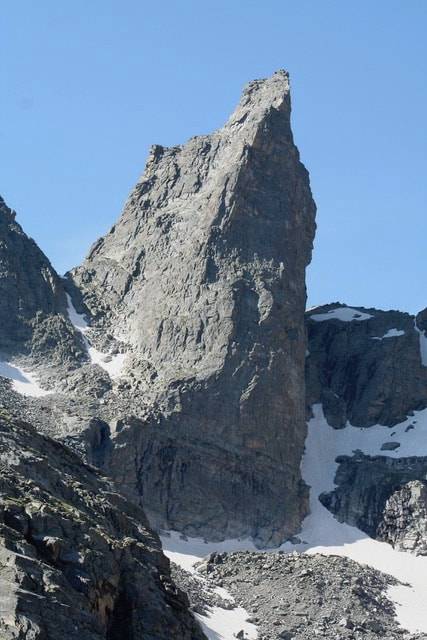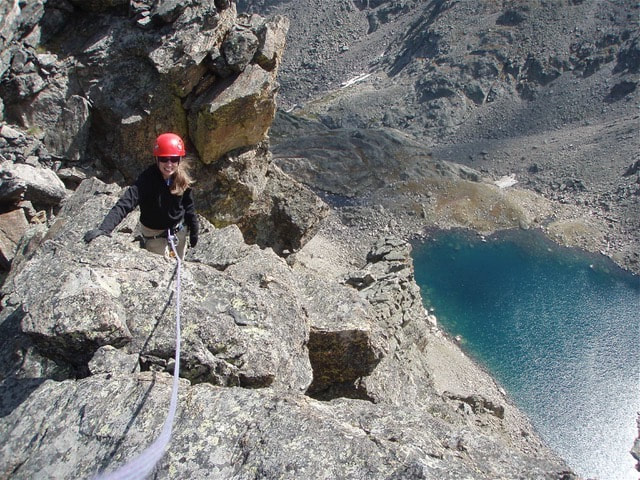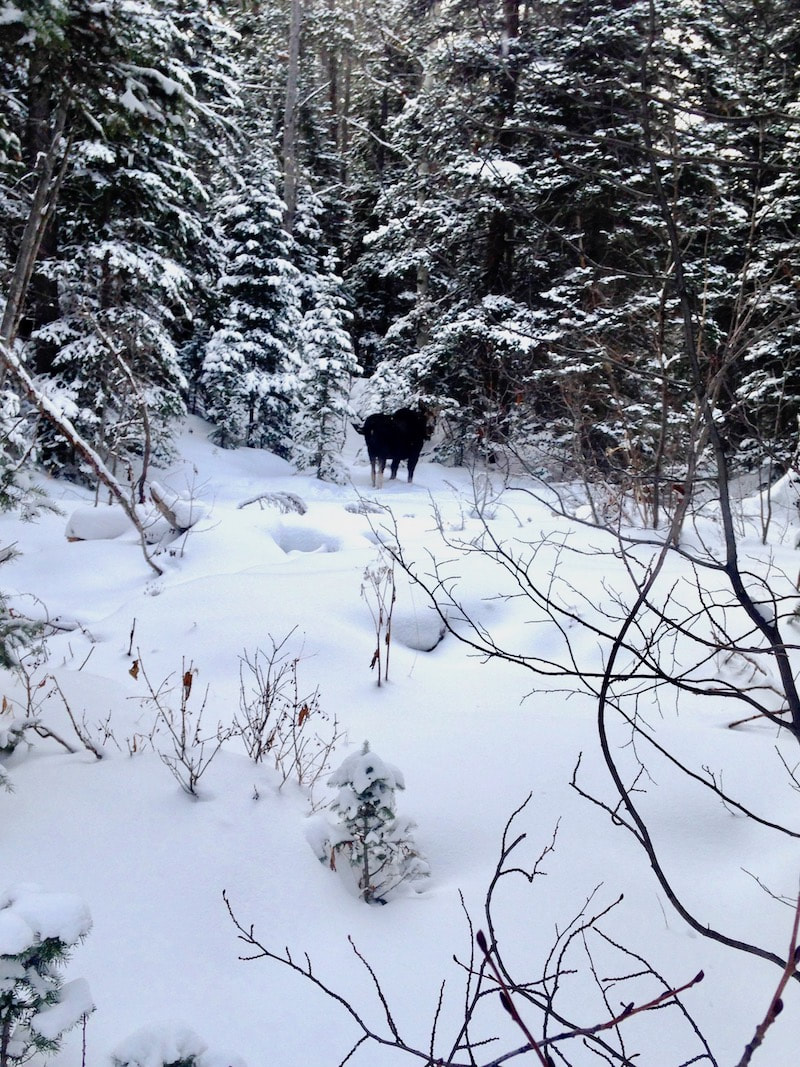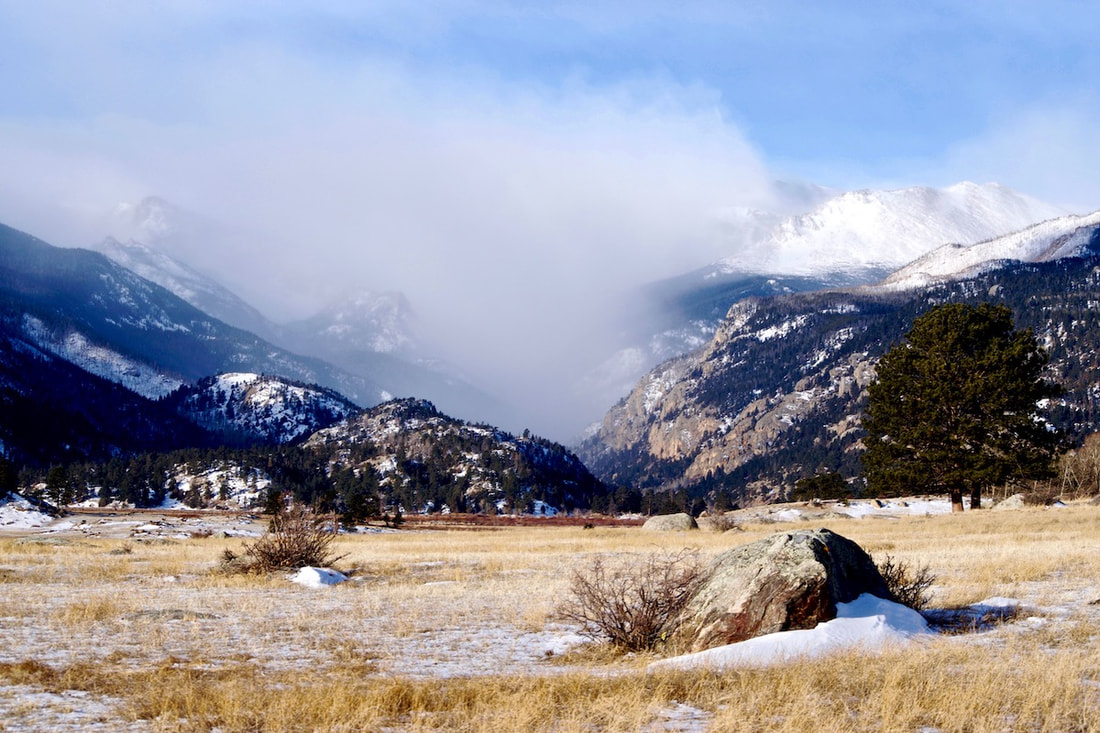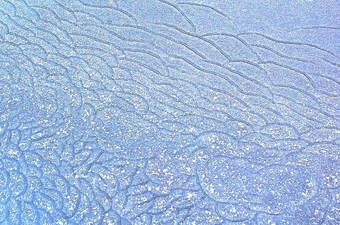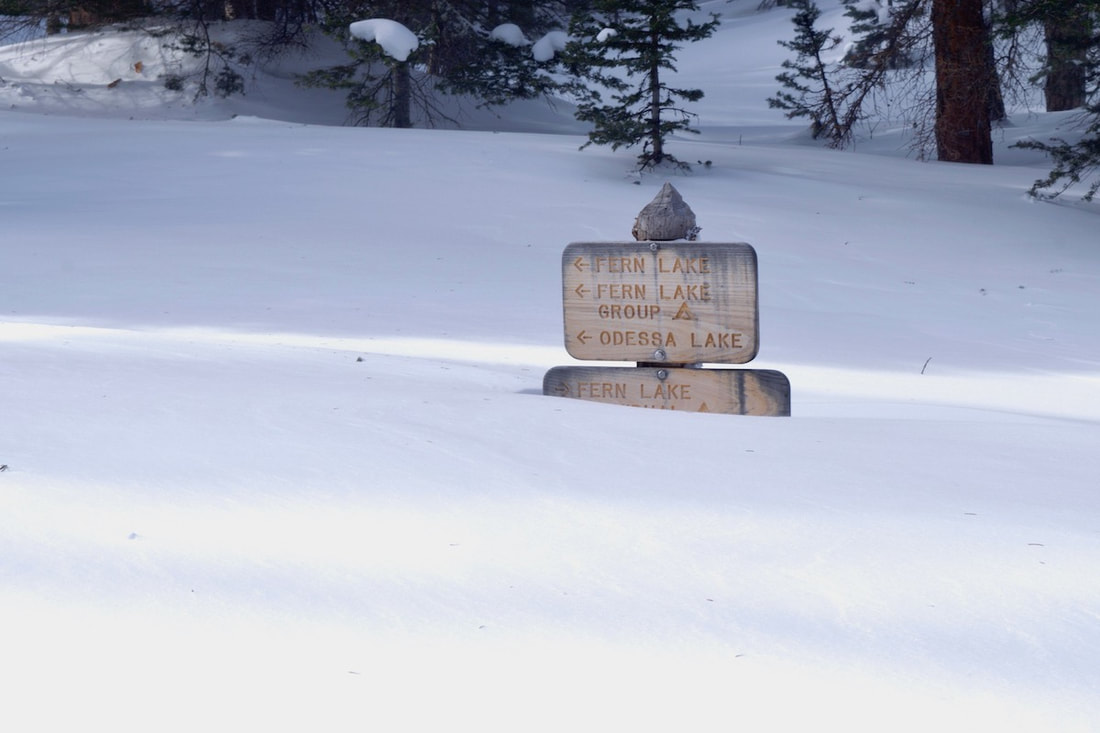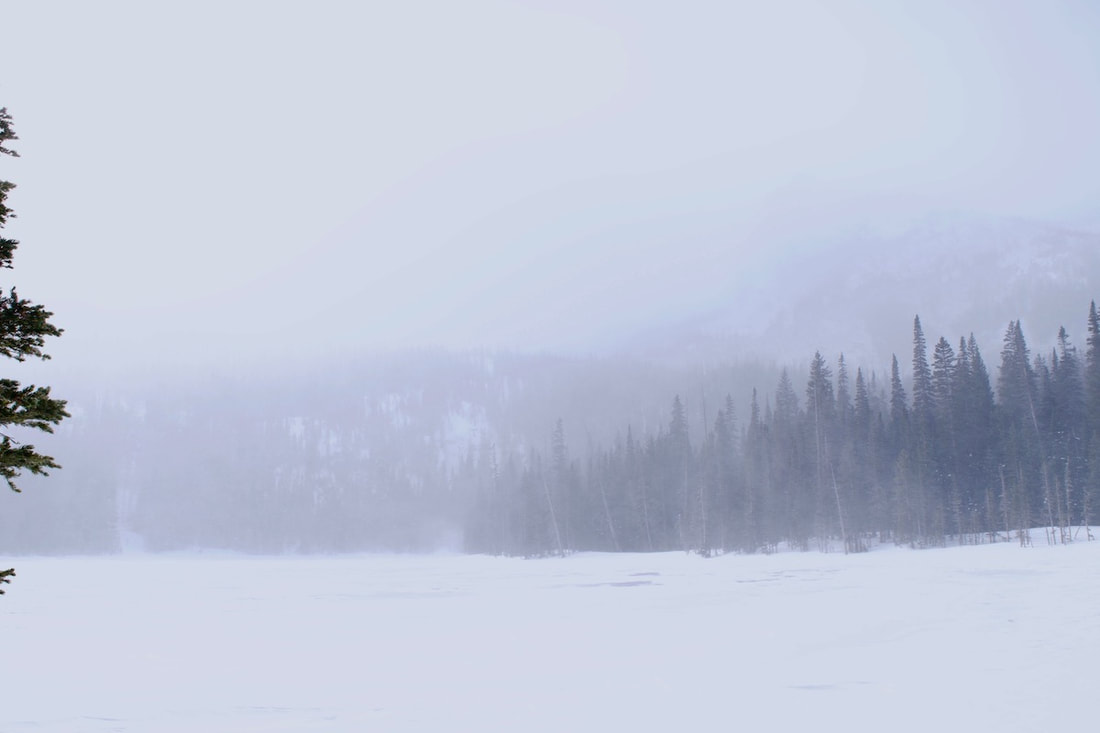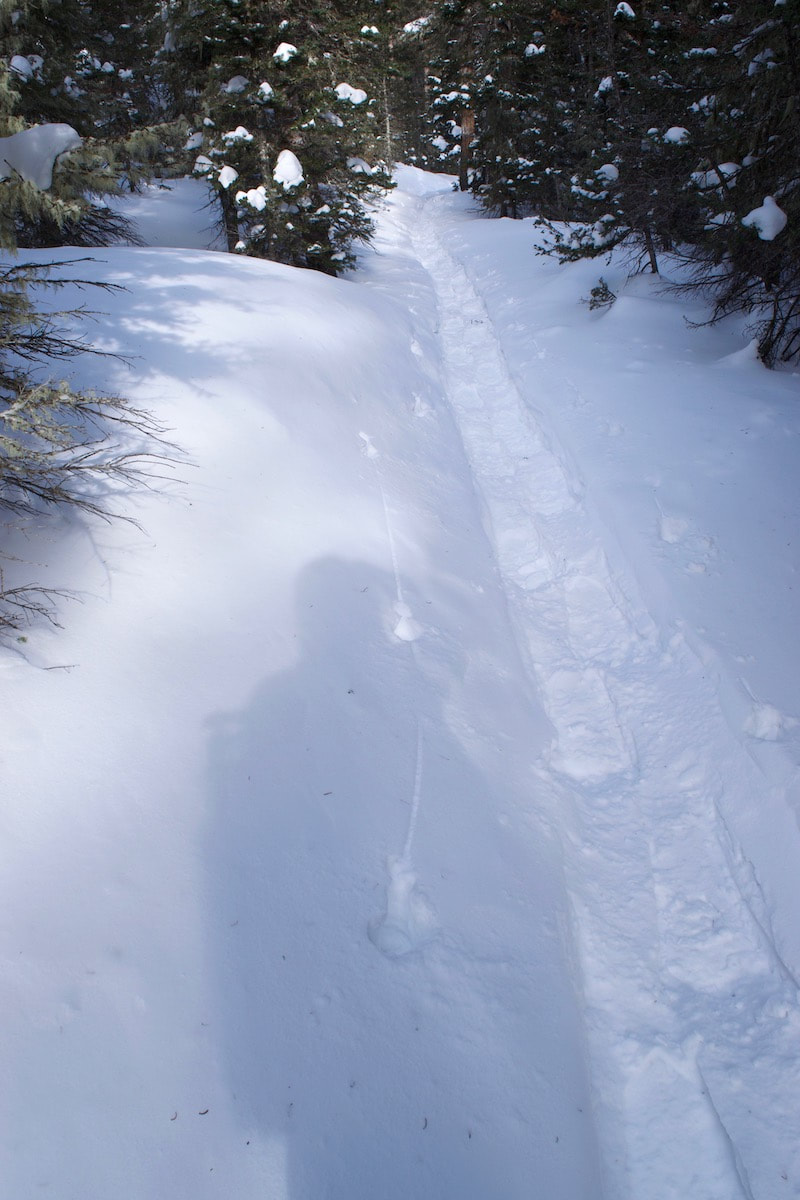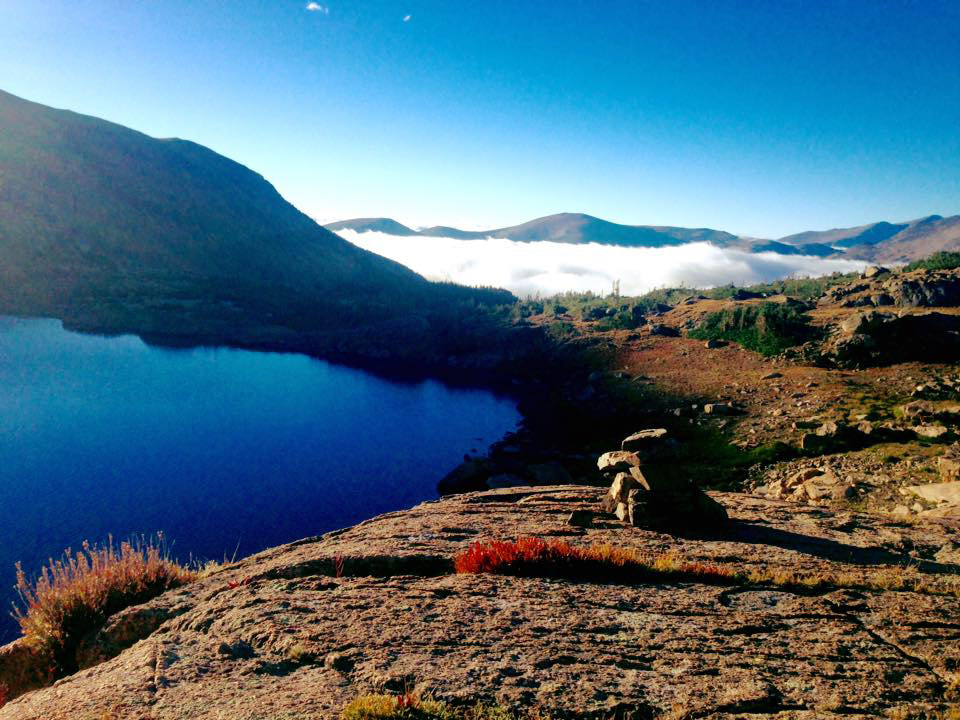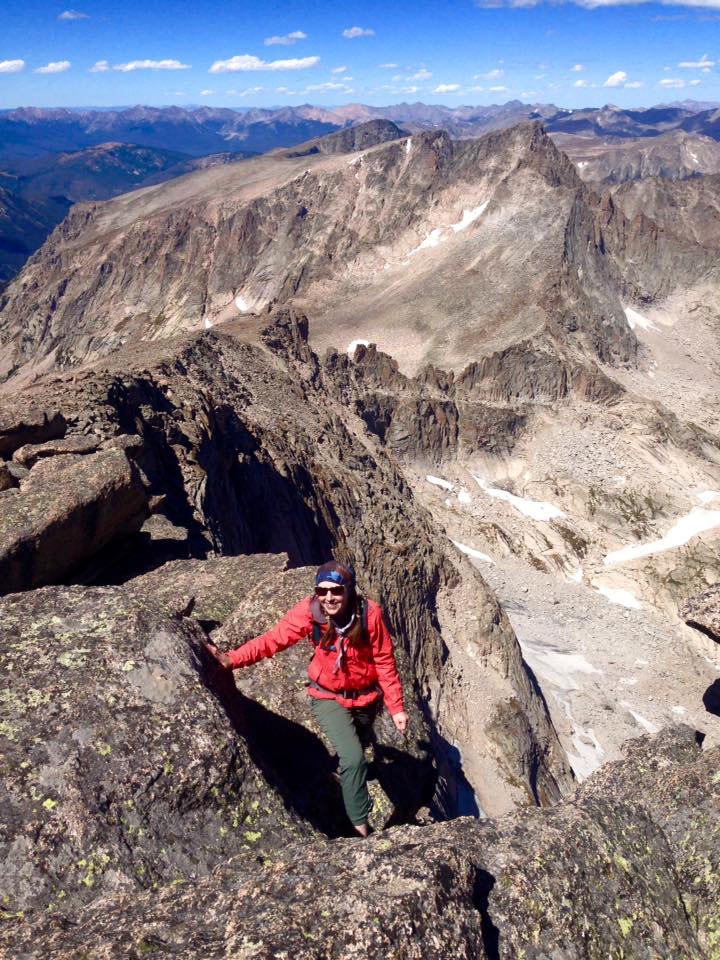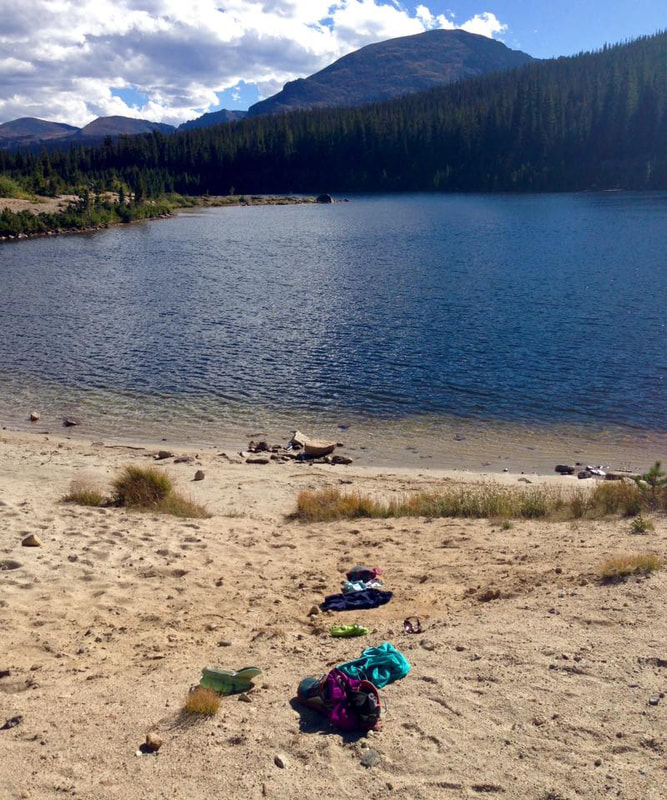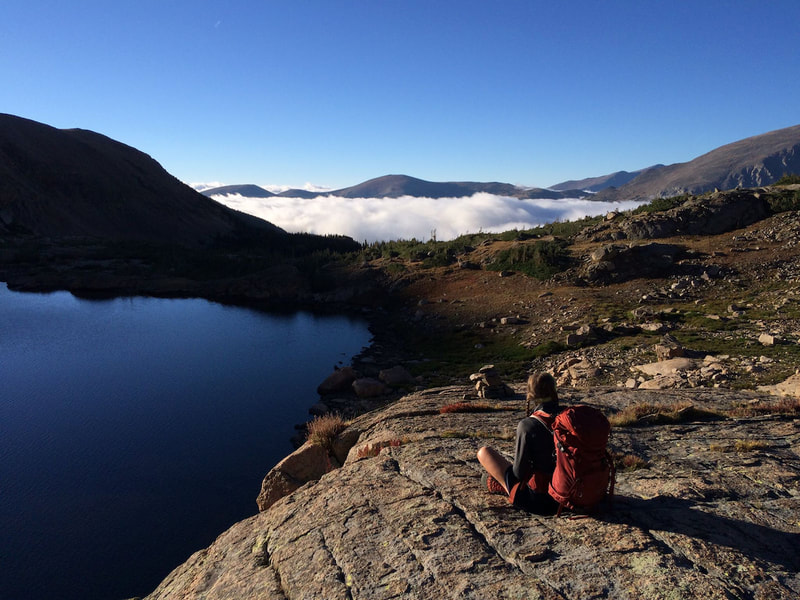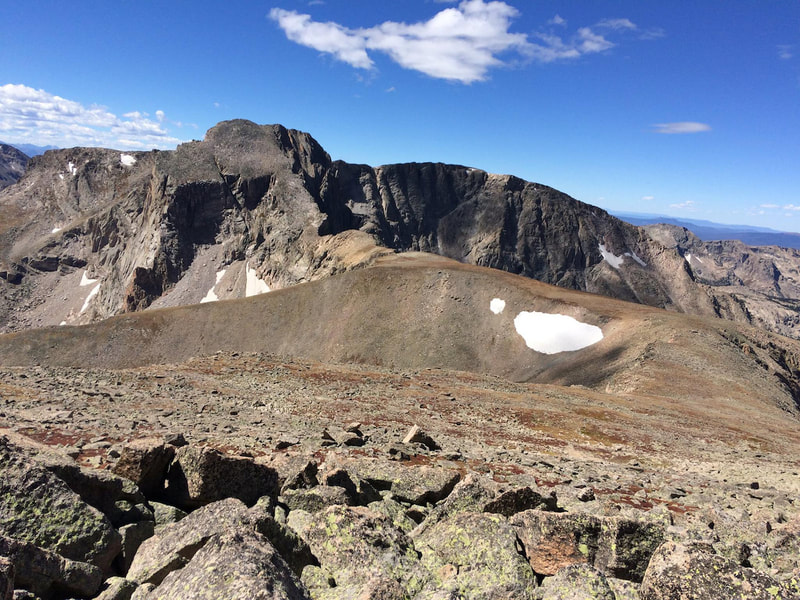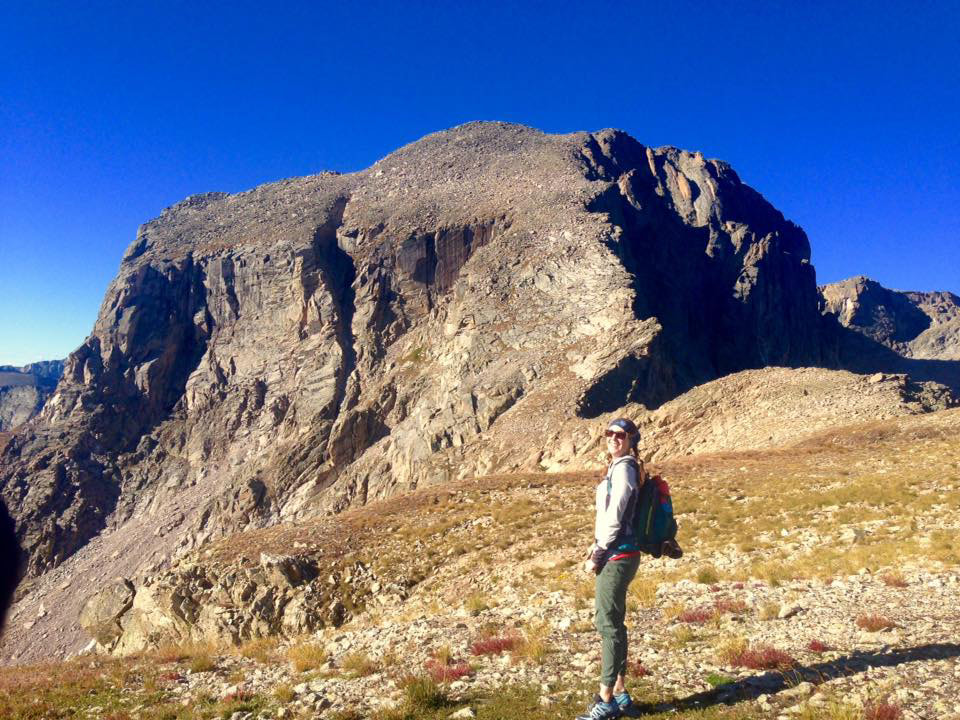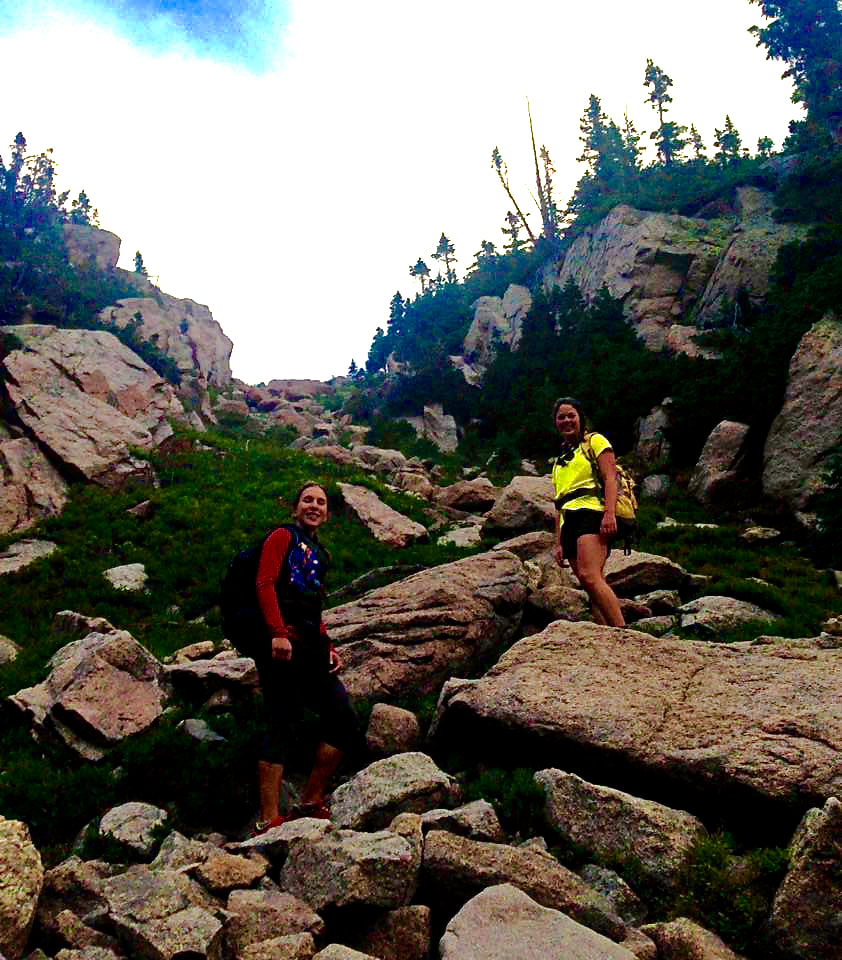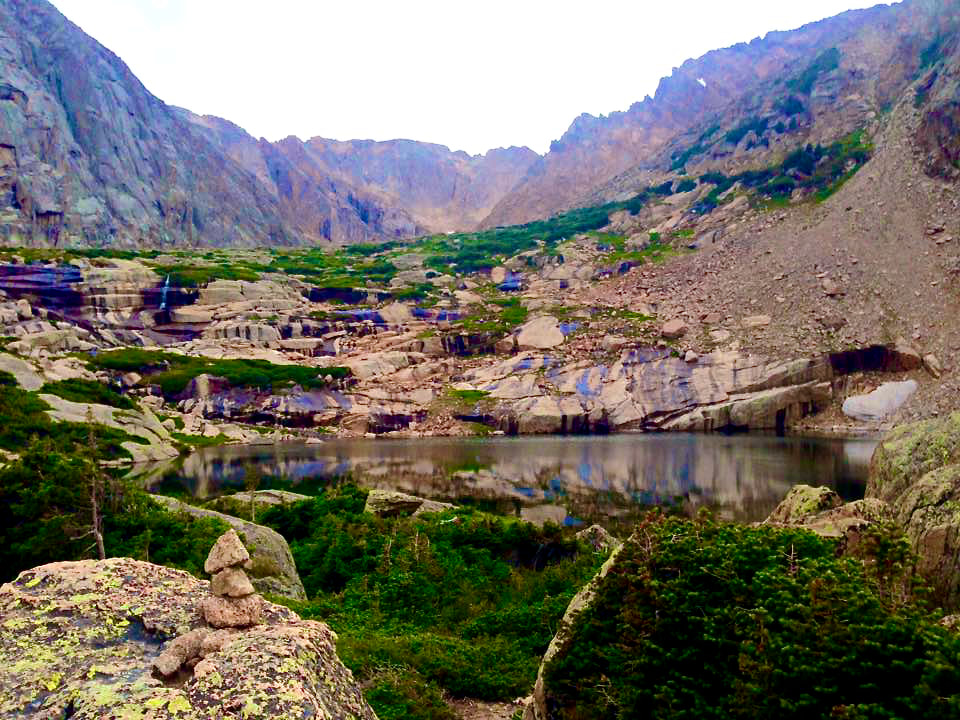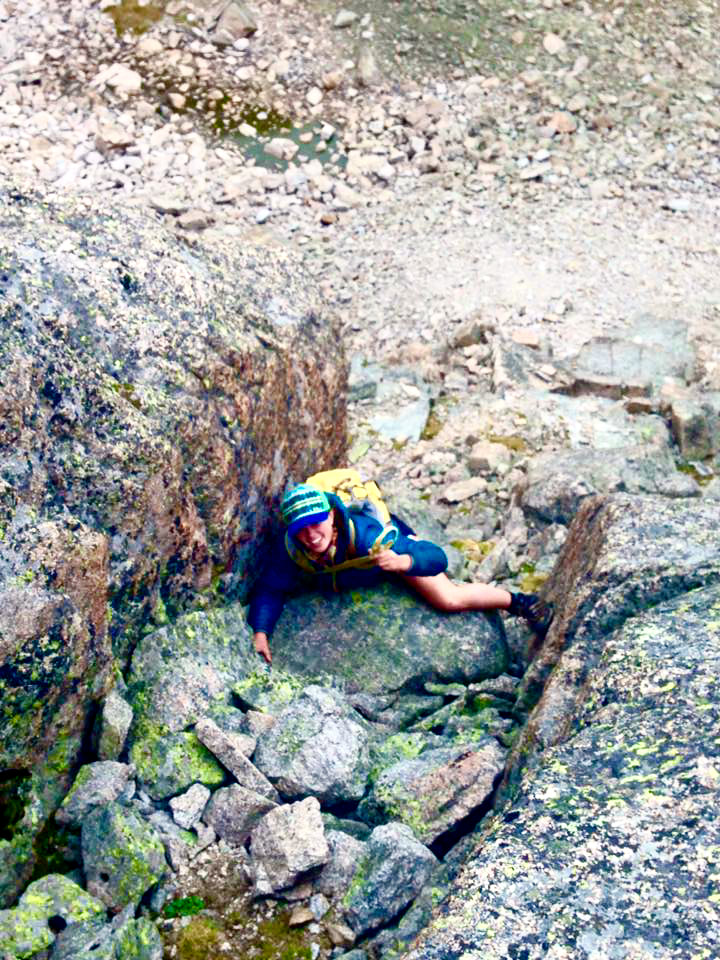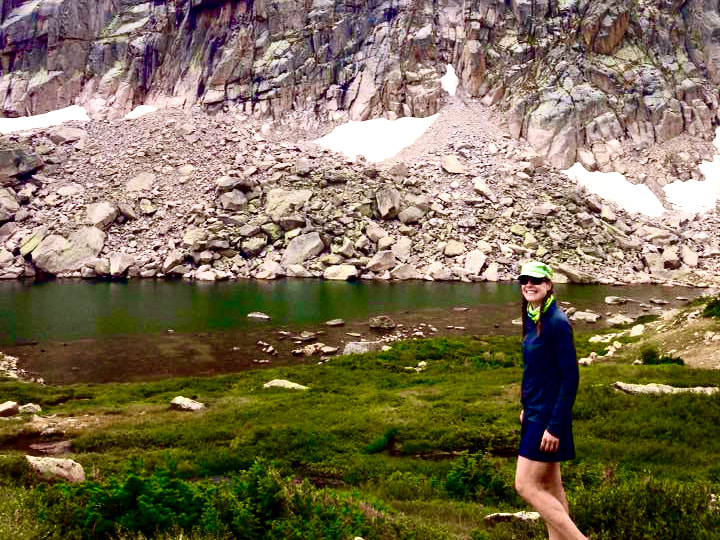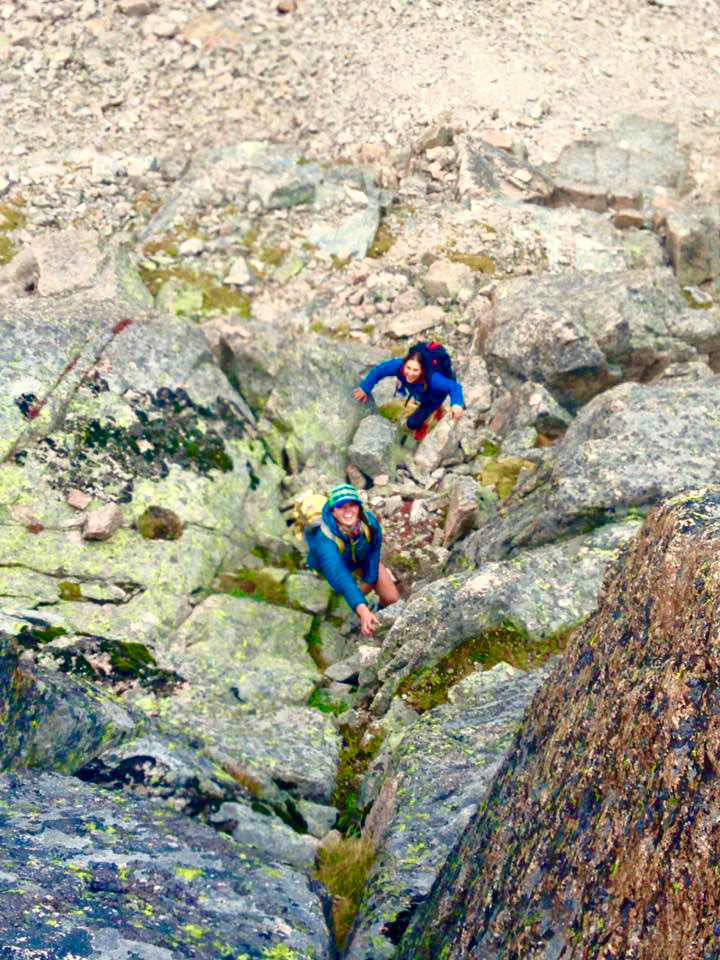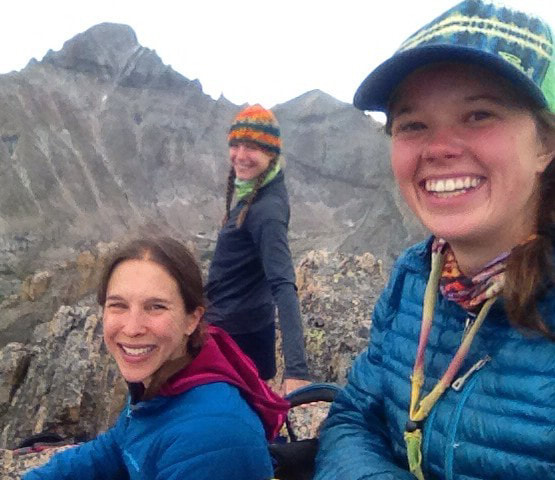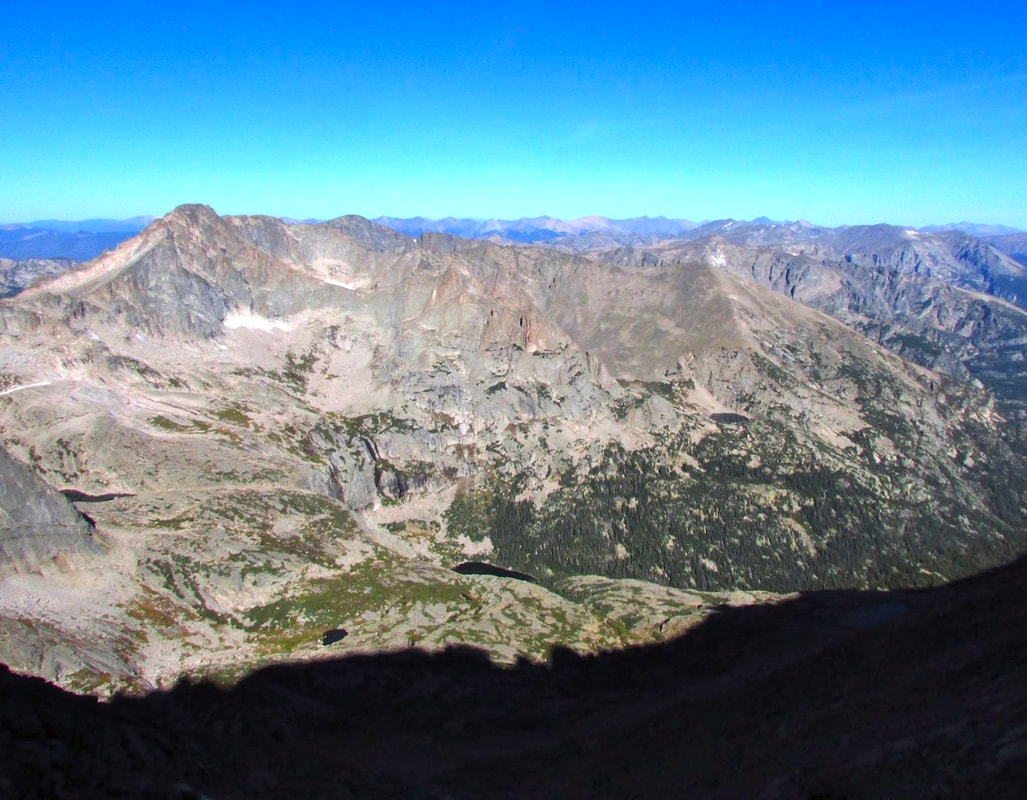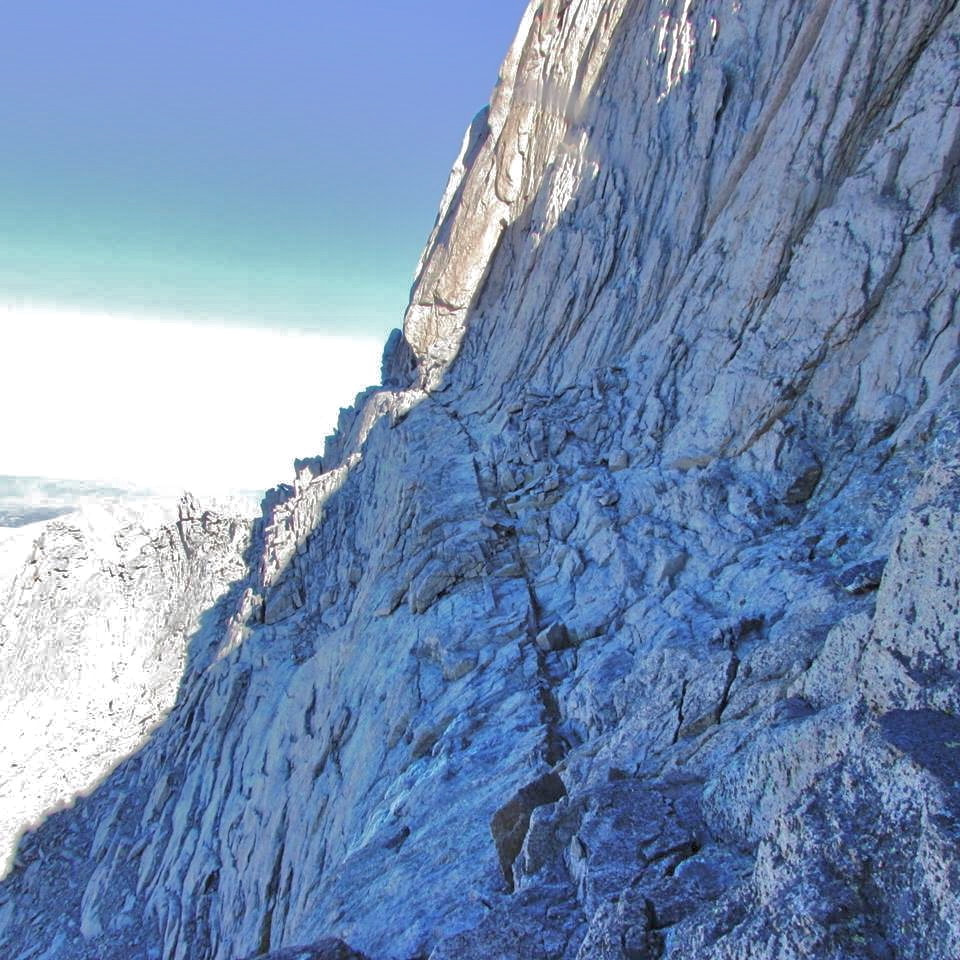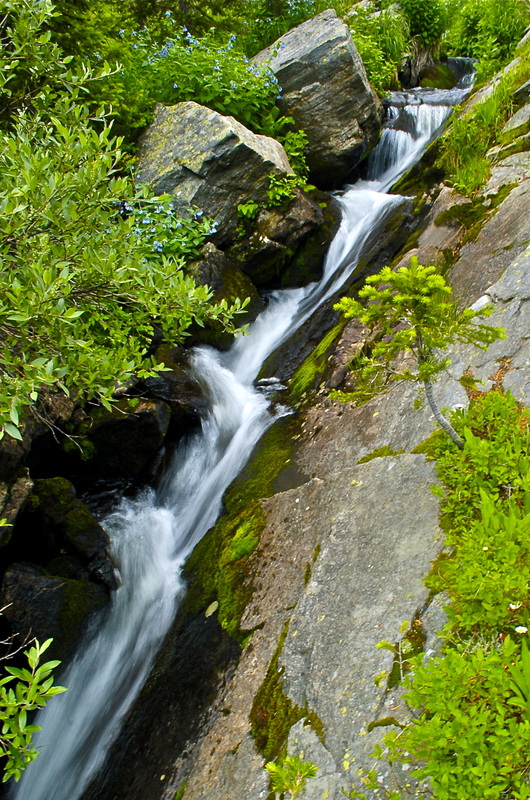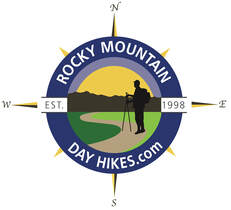|
Notes from the
Trail |
|
Is this Brave New World of Blogging for me? by Sybil Barnes
I don’t remember when I learned to read. It seems like something I have always done and always enjoyed. I can be transported to Oz or Everest or the blue highways at the turn of any page. I find the list of ingredients on cereal boxes fascinating. In addition to being a reader, I always thought that I was a writer. I wrote letters to my friends and kept a diary until I began to call it a journal. I wrote little plays for the neighbor kids to perform in the backyard, created graphic novels from pictures cut out of the pages of catalogs and magazines, and thought up dialog to speak when we played cowboys and indians at school recess. In fifth grade, I wrote a haiku which was published in a national anthology. I can’t remember it now. Maybe it went something like: From the car, I see Ponies on the grass. Alas They do not see me. Were the judges impressed that a fifth grader would try to paraphrase or plagiarize Gertrude Stein? Am I kidding myself that I knew who Gertrude Stein was in 1960? Maybe she was an entry in the 1950 Book of Knowledge which was our home reference source. I just liked the way grass and alas sounded together. And I thought poetry, even Japanese poetry, had to rhyme. I realized much later that someone having their name in an anthology probably guaranteed another sale of the book. Maybe more than one if they had a large family. Skip ahead another decade. I graduated from college but I didn’t want to live in a city. So I came back to the mountains and got a job in food service. Then I bought a book store. After the 90-day economy of Estes Park and my own propensity to spend more than whatever profits I made in the remaining 275 days on entertainment of various forms convinced me that I wasn’t cut out to be a businesswoman, I was hired at the library. I still wasn’t writing anything. When anybody asked, I said I was working on a children’s book about my cat. So many years past that early success, I’m still not a writer. I get up before dawn to walk dogs or drive the mail to Allenspark and then I walk some more dogs or go to the library or a book group and then I walk some more dogs or scoop some litter boxes and go out to eat and maybe sit down with somebody else’s novel and fall asleep before the 10 o’clock news. Some afternoons or nights I go to movies and try to stay awake through them and the drive home from Boulder. Most evenings, I wake up on the couch to some 4 a.m. infomercial or a whining dog who needs to go out. After I pick up the book I have inevitably dropped on the floor, I start all over again. But maybe a deadline and a word limit will be the ticket to productivity. I’m only the length of this century late to the party. And I hope I won’t just add to the general detritus of your day. Or send you down a rabbit hole that will prevent you from realizing your own dreams or projects. Let’s just see how that goes.
0 Comments
We moved to Canon City, Colorado partly because my brother flunked first grade and my parents didn’t want him to have to repeat it here. I don’t think he ever learned to read very well. We came back every summer. That makes me eligible for the “almost local” group. And after college I moved here because my experiences in the real world qualified me as a country mouse and eligible for the “stay here” group. I’ve had jobs in every sector of the hospitality industry from scrubbing toilets to greeting customers at restaurants to owning a small business. My favorite career was as the local history librarian at the Estes Park Public Library and the reference librarian at Rocky Mountain National Park. I have a listing in the Library of Congress for a Story Corps interview with Enda Mills Kiley and also for my pictorial history of Estes Park, an Images of America book published by Arcadia in 2010. I’m interested in local history, current events, movies, plays and music, books, traveling, and random thoughts I hear or see on radio or tv or the street or even FaceBook. Maybe some of my posts will include those topics or others.
While I am always excited to see a place for the first time, attain a new summit or fish in a lake I’ve never visited, spring is the time of year to find comfort in the familiar; to return to the trails we’ve hiked dozens, if not hundreds of times. What a gift it is to revisit a favorite tree or boulder, to note the ever-melting snow drifts and enjoy the spring wildflowers as they begin to bloom seemingly one species at a time.
After the flood of 2013, the NPS put in a beautiful new bridge below the falls to replace the one that was washed away. I see a lot of folks admiring Ouzel Falls from this vantage point. It’s a lovely view, but an extra couple of minutes of rock-hopping and ducking under tree limbs will take you right up to the base of the falls. Regardless of what else may be going on in my life, any day I get to feel the spray of a waterfall is a pretty good day. Once the snow melts out, hikers can continue on an unmarked trail up to the big beautiful valley through which Ouzel Creek meanders before plummeting 40 feet and joining the North Saint Vrain Creek. This valley, which lies within the scar of the Ouzel Burn of 1978, is a lovely place to spend an afternoon fly fishing for small brook trout or simply enjoying the sounds of the gurgling creek while Ouzel Peak towers above you in the distance. Like me, the young aspens and fireweed in this area got their start on this beautiful planet during the summer of 1979. Nature presents us with many silent metaphors. The juxtaposition of charred trees and wildflowers reminds us that what appears completely void of life can be reborn. Calypso Orchids alongside a trail carpeted in last year’s dead aspen leaves give hope that that which appears to be completely void of life may be just moments from blooming. May we embrace this season of renewal and awakening with gratitude for the quiet lessons from Mother Earth. This is the season to return to return to the places that have greeted us year after year. Spring is a wonderful time to rediscover the lower elevation hikes in RMNP while reflecting on the past year and looking forward to the one that lies ahead. In addition to Ouzel Falls, my favorite spring hikes include Fern Falls, Bridal Veil Falls, West Creek Falls and MacGregor Falls. Mount Lady Washington is a lovely (although much more strenuous) springtime favorite at 13,281’. While the high peaks remain guarded by the lingering snow, I choose to embrace the springtime and its gifts, knowing that the season to stand atop summit after summit is just around the corner. “Hope is not born on mountain tops, but in valleys when you’re looking to the heights and peaks that you’ve yet to climb.” Here is my introduction to Rocky Mountain National Park, Colorado’s Crown Jewel. Spending time in Rocky has brought to me not only the world of climbing but the world of wildflowers. I have immensely enjoyed learning and expanding my knowledge of Rocky Mountain Wildflowers and had the honor of the Colorado Mountain Club to publish three pack guides I authored. The Alpine Flowers pack guide will be available in March, 2019. You never know how spending time in Rocky Mountain National Park will change your life forever! MY BEGINNING OF THE FINAL THREE It began innocently enough in 1974. That is when I came to Colorado for a summer job at the YMCA of The Rockies in Estes Park. I arrived from New Orleans, yes below sea level, in mid-May that year. Being a proper southern young lady I wanted to make a good impression on my new employer. I had worn a sleeveless silk dress, rather short as I recall, stockings and the cutest little heeled sandals you ever laid eyes on. It was approximately 30 degrees and spitting snow. I must tell you, my arrival ended up to be one of the scariest days of my young life. I recall saying to myself, “I have made a terrible mistake!”
From a short silk dress to summits, my progression came fast. By the end of that summer I had climbed most of the major peaks in Rocky Mountain National Park. Having graduated from college, I decided to stay in Colorado. You might say the rest is history, but it was not that simple. I lived in Estes Park for twelve years and climbed in Rocky year-round. I found myself focused on the major peaks, different routes with a few new peaks thrown in once in awhile. Then came a career move away from Colorado and my beloved mountains. To say I began grieving would be an understatement. I made the effort to spend a lot of my summers back in Rocky with “my” familiar peaks. In 2001, I returned to live full time again in Estes Park. Dorothy may have been on to something, “There is no place like home.” After completing the 54 Fouteeners in 2005, I was hit with a pain of guilt. I imagine you all know what it’s like to ignore a friendship. This was worse; it was like neglecting your own husband. After all, Rocky Mountain National Park was now my backyard! I began to rekindle my relationship with Rocky, started studying the map with new interest and curiosity.
Then, reality struck me hard. THE FINAL THREE were The Sharkstooth, Hayden Spire (both Class 5 technical climbs) and Pilot Mountain a difficult Class 4 climb. Had I set myself up for this? Shouldn’t the last peak be easy, like Estes Cone or Twin Sisters? I hadn’t climbed anything beyond Class 4 in years. I came to the realization that THE FINAL THREE were meant to be my grand finale. I needed a challenge; I wanted a challenge! I needed to gain my confidence back on the rope; I needed a plan. It sounds like I needed a lot! The Sharkstooth was the first of my FINAL THREE. My climbing partner and I left the parking lot at 3:45a.m. I once read that eighty percent of success is just showing up, I liked my chances.
As I climbed toward the summit tears were in my eyes. This was what it was about: I hadn’t gotten here because of a list, but because I had taken on the challenge of exploring the new. For me this comes with great joy, satisfaction and fulfillment. Next was Pilot Mountain, which thinking back, I over rated the difficulty. It was a fun Class 4 climb in Wild Basin. The ridge out to the summit is awesome and the view of Falcon Lake from the summit breath-taking! The last of the FINAL THREE was Hayden Spire. I had admired this peak from afar for decades, now I was coming close to standing on the summit.
Reflecting on THE FINAL THREE, I will forever remember the air beneath my feet, the sudden flight and song of finches above my head, the sense of inner relaxation and burst of excitement at the same moment and the incredible sound of the silence around me. THE FINAL THREE was my way of remembering Dick’s 20+ year companionship on these peaks. In the mountaineering world this is a speck. But it is my speck in my world and I am grateful for the opportunity to hold it in my heart. You may ask, is there anything left of that southern girl from 1974? I like to think so. My father was a riverboat captain; he lived with patience, endurance and perseverance. I like to think I gained these traits from him. And, oh yes, I still love wearing silk dresses (a little longer now) and cute heeled sandals. “I swear I begin to see little or nothing in audible words, All merges toward the presentation of the unspoken meanings of the earth, Toward him who sings the songs of the body and of the truths of the earth, Toward him who makes dictionaries of words that print cannot touch. “I swear I see what is better than to tell the best, It is always to leave the best untold. When I undertake to tell the best I find I cannot, My tongue is ineffectual on its pivots, My breath will not be obedient to its organs, I become a dumb man.” Walt Whitman, from A Song of the Rolling Earth, Leaves of Grass “Moreover, I find that though I have a few thoughts entangled in the fibers of my mind, I possess no words into which I can shape them. You tell me that I must be patient and reach out and grope in lexicon granaries for the words I want. But if some loquacious angel were to touch my lips with literary fire, bestowing every word of Webster, I would scarce thank him for the gift, because most of the words of the English language are made of mud, for muddy purposes, while those invented to contain spiritual matter are doubtful and unfixed in capacity and form, as wind-ridden mist-rags.” John Muir in a letter to Jeanne C. Carr, a former professor  These are the struggles that two great nature writers, a generation and a continent apart, find themselves in; words that are not adequate to express what they experience in nature. And yet Whitman and Muir do write, splendidly, exquisitely. How can I possibly think that I will find the words in these notes that I jot down about my experience in nature? I do not. And while I’m under no allusion that my words will do anything but possibly get across some notion of what my experience in nature is, I will also write because, what the heck, what I experience in nature is worth the try. I cross over the hump of piled snow left by the snowplow in front of the gate that closes Trail Ridge Road at Many Parks Curve. I clip into my skis and follow the snow path made by a couple of snowshoers. Fresh snow has fallen and avalanches are crashing down all over the state, closing roads that haven’t been shut down from the overpowering snow slides in over a half a century. But here, it’s quiet, not even wind music, and I’m caught up with making my skis function. Because I still ski on skis that need wax for propulsion, and because I forgot to tend to my skis by putting on new wax before I left and so I am going with whatever wax was left on the skis from my last outing, and because this snow can be so difficult to wax for which can cause the skis to either not grip and slip too much or form large clods of snow that hang off the bottom of the skis making them impossible to move, I wonder about how well things will go. But so far, everything seems fine. So I keep moving forward. The new snow is warm snow; good snow for building snow forts and stockpiling a collection of snowballs to be lobed at others. But I am an army of one fighting against an army of none, so the effort is left behind. There are views down into Horseshoe Park, but the encompassing peaks are hidden by low clouds. The somewhat wetter snow clings easily to the trees, and though it is fresh, it seems to hang on the branches like damp laundry.  Of course, the very thing that Whitman and Muir find so impossible to write about is not simply describing the beauty they see in nature, but the spirit or essence of nature, the internal eternal that one experiences in nature. Nature is more than beauty, it is a life unto its own and when we walk into nature, we are entering a world that already exists, we are walking into a life that knows how to take care of itself, and does so with such exquisite beauty and grace that it feels magical. We are left in wonder. There’s an outward bending curve in the road as it follows the contour of the hillside and it would seem the wind must always blow around this bend because, despite the many feet of snowfall that has accumulated all around, there is pavement showing here. And indeed, the wind is now gusting snow into my face and I lower my head letting the top of my hat take the pelting. But not long after, back in the trees and no longer in wind, the snowshoe tracks lead off to the outter edge of the road where they sit and rest on a rock wall. But the snowshoers have had enough and their tracks head back, leaving me to break a new track. Without even the snowshoe tracks to keep me company, the surroundings now seem quieter and I begin to trace a skinny trail as I head farther up the road.  “I swear the earth shall surely be complete to him or her who shall be complete, The earth remains jagged and broken to him or her who remains jagged and broken.” ~ Whitman I fall into a steady rhythm and my eyes focus primarily on the forward placement of the skis, occasionally looking up to track my progress. But my mind wonders into all sorts of everyday thoughts. Fortunately, the extra work of making a new track forces me to take a few more breaks and I am given an opportunity to gander about while catching my breath. My mind also takes an opportunity to rest and soak in the silence and calm. This is what I came to find. The clouds dissipate some and the sunlight falls between the trees and lands gently onto the snow. I came to a spot where I wasn’t quite sure which way the trail went. Up to this point the trail had been easy to follow, despite the deep snow. But here, the trail could go either way. With my snowshoes, I paddled off to the left of the big snow covered fir tree and began navigating, keeping the creek on my right. The way I chose was not the trail way, but that was ok because I knew how to get to where I wanted to go. I saw hoof prints in the snow, but they had a layer of snow on top of them, so I knew they were not fresh. And were those elk turds or moose? Also not fresh. Navigating through some trees, I came upon a spot where a large animal had been laying. This did seem fairly fresh and I stepped just outside of the bedding spot. I continued through some more trees, keeping the snow covered stream on my right. I could see the stream was heading toward a small canyon wall on the left, with dashes of snow on narrow ledges dotting the cliff. And then there it was! Off to the right standing by the creek and looking at me through some short aspens, a moose! I stopped in my tracks and looked at it. It was not a big moose and she stood there looking at me. As I glanced around for others,
With the stream cutting toward the canyon wall, I had to find a narrow spot to cross. There was a spot where a patch of snow formed a bridge across the ice. With the moose watching, and probably hoping I would break through the ice and fall in, I placed my left snowshoe down along the edge of the bridge and stretched my right snowshoe as far over to the other side of the snow bridge as I could. When I began to push off with my left foot, I heard the thin ice underneath the snow start to give way, but it did not. I sidestepped over and there I was with the wooded forest stretching upslope ahead of me and away from the moose. I glanced back, wished the moose a good day and again apologized for disturbing her. I started to make my way up through the trees, scanning the surroundings for the best route to take. In mostly aspens, it was fairly open traveling with about a foot or more of snow. This was the first time I had used the snowshoes off trail and I found the navigation around the trees much less complex than when I used to do this kind of thing with my 190mm cross country skis with 3 pin bindings. It had been a long time, but I remembered how fun it was to wander about the woods like this. Suddenly this feeling of joy welled up from within. I was wandering in the woods! I felt free! I loved making my way through the woods in the winter, and the snowshoes were making it really easy to do (I had resisted for so long). That feeling, that delight temperature a little cool, but my feet were warm, and I was warm and myself, finally. I had found myself, here in this moment of pure joy. It felt so good to feel that again. It was a moment I was ready for and I felt a little bit of healing occur from within.
The reddish orange canyon walls rose up across the stream and contrasted with the white snow. There were thick icicles hanging off an overhang. I navigated away uphill, and then suddenly, there was the trail! I looked back from where I had come and smiled. I swung my car onto the Moraine Park Campground road and looked beyond the vast Moraine Park up into the mountain valleys where my destination lie and I knew at that point I wasn’t going to be having any lunch at my destination. My destination was Fern Lake and from the looks of things, there were ferocious winds and snow channeling its I parked in an empty parking lot at 8:50 am. This was going to be one of those rare days in the Park when no one was going to be on the trail. I was on my own on this day. From the trailhead, the Lake is listed as 3.8 miles, but nobody gets a parking spot at the trailhead anymore. Either the small lot is full in the summer, or the road going to it is closed for the winter, like today. The walk from the extended parking lot, where the shuttle bus will drop you off, is an additional .7 miles. So, the real distance to Fern Lake is four and a half miles, or 9 miles round trip. I grabbed my snowshoes out of the car and hoisted them under my left arm. There was only a thin layer of packed snow on the road from the parking lot, and there wasn’t likely going to be any significant snow all the way to the Pool, 2.4 miles away. I wasn’t sure just how much snow I would encounter after the Pool, but I was very sure I would need the snowshoes somewhere after that. So carrying them seemed the best option to me, better than wearing them over rock and frozen dirt. I was curious about the conditions up higher because we hadn’t gotten very much snow in Estes for quite a while. And, I guess, I wondered just how adverse and horrendous I would find the conditions at the lake. I also wondered how I would do getting up there, I had not done a winter outing like this in a while. I felt like I was dressed for winter travel, and I didn’t really question my ability to get up there, though I wondered how worn I would feel by the end. But I think I wanted to see what it would but here in the trees, the wind was mostly overhead, and travel on the trail along the Big Thompson River was familiar and easy going. I stopped several times, putting down the snowshoes, to photograph the frozen river ripples on the river and consider the undulating and sensuous form and beauty of the ice. Even in its frozen state, the river was to be admired. Though water still flowed below the ice, the river was silent. But the noise from the constant raging wind overhead filled the void left by the river and made me want to keep moving. Soon I was at the Pool. I thought this might be a good time to put the snowshoes on, but then thought the trail for the next half mile might still be mostly cleared, so I carried my snowshoes about another 30 yards and then encountered a sizable drift over the trail. I went ahead and put them on and I didn’t regret having done that, I found there would be plenty of snow from here on. This next brief section of trail above the Pool stills travels along the valley floor and three streams converge along this stretch. After I carefully negotiated a narrow footbridge with my snowshoes, the trail begins to rise up toward the glaciated hanging valleys of the Odessa Gorge by crossing the south hillside of Spruce Canyon. From the trail in the trees I could hear the constant wind tearing out of Spruce Canyon like a high pitched freight train. The trail switchbacks through tall spruce trees to Fern Falls, then cuts west and switchbacks again before finally turning towards Fern Lake. By now, most of the elevation to Fern Lake has been gained and there’s considerably deeper snow. Even though there are no new tracks and the wind has covered over most of the old tracks at this point, the snow path is easy to follow as it holds a steady course through the spruce trees. Some trees are holding up other trees that have died and fallen into their arms and all along the trail you can hear these trees that are holding the dead moan and squeak and sing, caused by the friction between the two trees as they sway in the wind. I knew if I approached the lake in the normal way over that rise, I would likely get blasted with a face full of freezing wind gusts, which didn’t appeal to me. I opted to work around the back side of the patrol cabin through the trees. The snow was piled up super deep here and my snowshoes were having trouble keeping me afloat. But I paddled my way through the snow and down to the lake’s edge. There were patches of exposed ice out on the lake where the main wind channel flowed. In order to get the obligatory lake photo, I kept the wind to my back and skirted the edge of the lake, finally wading across that wind channel to the lakes outlet. Along the lakes edge, the wind sculptures interesting patterns and I would have loved to spend some time photographing these pieces of nature art . But the lighting was camera bag for very long. So I huddled behind some small pines and peaked around them across the lake and up the Gorge. On a clear day, Notchtop, the Little Matterhorn and Gabletop provide supreme backdrops to the lake. But on this day, the other side of the lake was hardly visible and only Galbetop struggle to barely appear from the low, snow filled clouds, and my camera’s exposure didn’t even acknowledge its effort. Not finding much reason to dilly dally any longer, I left the lake to be more thoroughly enjoyed on another day. My destination was reached, and it was lunch time. I retraced my steps back and quickly descended to Fern Falls before dropping my day pack for a bite. Then I moved back down the trail at a good pace. I was surprised that at certain sections of the trail, the wind had already blown over my own tracks from just less than two hours ago and at one point, back down on the valley floor before the foot bridge, I briefly lost the trail. But then I was back at the Pool removing the snowshoes and continued without stopping until I reached the trailhead. By 2:50, I was back at the car, a 6 hour day. My pace averaged 1.5 miles an hour, including stops.
of an effort. Winter though has it’s own beauty, of course. And if you accept it for what it is, a part of a larger seasonal picture, it is possible to find the connection. But just to be sure, I think I’ll take a few trips.
We are not built to survive in these conditions for very long, but we are at times built, for briefs moments, to laugh at them and smile at them, or be humbled by winter’s ferociousness. And there are those rare souls that find winter their greatest joy, live for the defiance, find love and happiness even in all the desolation of winter.
Some call this sort of nature pondering mindfulness, a wakeful presence, a form of spiritual practice. Laura Sewell observes that “perception, consciousness, and behavior are interdependent. Skillful perception is the practice of intentionally sensing with our eyes, pores, and hearts wide open.” Being in nature can slow time, provide solitude for contemplation and reflection. And through this process, there can be growth, even as one is grieving.
By Rebecca Detterline
I have always appreciated the views of Longs Peak offered by mountaintops near and far. So many times I’ve stood on a summit and asked a friend to get my photo with Longs Peak as the background. From the popular trail up to Dream Lake to the obscure summits of Wild Basin, there is no shortage of views of Longs Peak in Rocky Mountain National Park. That unmistakable, blocky summit seems to appear in unexpected places as well. Last fall, I was surprised to catch a glimpse of Longs when I hiked Torreys Peak, a popular Colorado 14er near Georgetown. Skiing down Parsenn Bowl at Winter Park Resort on a bluebird day, Longs is clearly visible in the distance. It’s almost as though that mountain follows me around, protecting me on my travels through the high country. My favorite view of Longs Peak, though, is the one from Colorado Highway 7, where the Longs Peak Inn used to stand. From there, you can see it all: the Diamond, the Loft, the Notch Couloir, and that beautiful skyline featuring Mount Meeker, Longs Peak and Mount Lady Washington. I etched that skyline onto every silly homemade card I made for my husband. He loved that mountain more than any place on this earth, and although my connection to Longs Peak did not run quite as deep as his, I definitely understood. I know what it’s like to feel Mother Nature wrap you in a blanket of wildflowers as you look up at the snow-capped peaks you hope to climb. I know what it’s like to feel a tear roll down your cheek because a sunset is just so damn beautiful that you cannot help yourself. I know what it’s like to try and catch your breath seconds after jumping into a frigid alpine lake. These are the moments that make you feel alive and I’ve been lucky enough to have had about a million of them. Upon returning from a backcountry camping trip in 2016, I was shocked to find out that I had lost my husband, Jim Detterline, in a climbing accident. Jim passed away on a Tuesday. The following Saturday I got in my car and drove to the Longs Peak Trailhead. After days of shock and being shuttled around and surrounded by so many people, that time alone was a really big deal. On that trail I had the first of so many one-sided conversations that start with, “Well, Jim…” followed by a flood of tears. Who knows what I might’ve talked about? I certainly don’t remember. I walked up the drainage that leaves the trail at Lightning Bridge and soaked in the quiet solitude and crisp fall air. When I rejoined the trail, I sat down and took out a t-shirt I had pulled out of the hamper because it still had his smell on it. I sat there at treeline, buried my face in that shirt and sobbed. I know every shortcut on the Longs Peak Trail and I really thought I’d enjoy a quiet hike down the old phone line, remembering all the times Jim and I raced down straight downhill after a successful climb, talking about what we were going to order at Ed’s Cantina. I took the regular trail down, though. No one could see the bloodshot, puffy eyes behind my sunglasses. I talked to people as though it was my first time to ever hike that trail. “You guys went to Chasm Lake? Wow! What was it like there?” I said to a group of young hikers. I remember some lady complimented me on my skirt. Someone else looked disapprovingly at my sneakers. What a feeling of freedom to be so anonymous! After days of being terrified to walk into the grocery store because I felt like everyone I saw either stared at me or averted their eyes, I felt free! No one knew me; no one knew my deep emotional connection to that trail and the peak it was named for. I know I’m not the only one who thinks of Jim every time I look up at Longs Peak or set foot on that trail. How lucky are we all to have that majestic peak to remind us of that laugh, those piercing blue eyes and that drive to stand atop that summit again and again! If you were lucky enough to share the summit of Longs Peak with Jim Detterline, you know that his enthusiasm for that peak never waned. He was as excited for summit #428 as he was for summit #1. For many people, the best part of a Longs Peak climb with Jim was the hike down. If you could keep up, you’d get a history lesson for sure! “Just imagine Rocky Mountain Jim and Isabella Bird riding on horseback up this very same trail,” he’d say as we cruised down the abandoned trail from their time. I don’t worry about my safety on the Longs Peak Trail anymore. I have a guardian angel who knows the terrain. I like to think that we all do. Post Comments:
Kay Rusk 2/14/2017 06:24:52 am Wow, beautiful Rebecca 💜 Thank you jennifer mills 2/14/2017 07:56:40 am So beautiful Rebecca. My heart is with you. Jo Stegura 2/14/2017 08:21:33 am So beautiful Becky. Happy to see you wrote this for you and Jim on Valentines Day. Jane Lopez 2/14/2017 08:28:33 am So touching, thank you for sharing Rebecca. Love is all around you and always with you. Kaci Yoh 2/14/2017 08:57:32 am This is beautiful, Rebecca. Mary Ellen Banfield 2/14/2017 11:18:26 am Thanks for sharing this beautiful tribute. My heart goes out to you! Holly Hampton 2/14/2017 02:20:41 pm Wow. This sure brought tears to my eyes. Both for the joy and for the grief. Such an agonizingly beautiful love letter. Steve Mitchell 2/14/2017 04:30:56 pm Beautiful! Jim was truly legendary. Ann Wagner 2/14/2017 05:01:17 pm This is precious our dear Reebz ... we love you so very much . Thanks for sharing Donna Egan 2/14/2017 10:20:41 pm Really beautiful Rebecca. Patti Donahue 2/15/2017 06:27:02 am Rebecca, so beautifully written, I could hear you speaking in my mind, I wish you peace and blessings, and the comfort and wonder of Longs Peak to wrap you up and hold you in all the days ahead. We love you, thank you for sharing, so well done. Laurie Button 2/15/2017 07:28:27 am Beautifully written, Rebecca. Thank you for sharing your heart with us. Gail Albers 2/15/2017 08:21:49 am Rebecca, thank you so much for sharing this particular journey with us all. What a blessing your life with Jim has and will always be! Cindy Elkins 2/15/2017 07:50:57 pm This is a lovely tribute to your relationship with Jim and Longs. You are an amazing woman and I enjoyed our art therapy last weekend. Let's do it again soon!! Anna Rumi 2/28/2017 06:27:40 pm Beautiful! Debbie Linkhart 4/18/2017 09:43:23 am Beautiful Rebecca and heart wrenching James Disney 10/25/2019 09:52:05 pm Well said and certainly heartfelt ... thank you. Gary Doak 1/7/2020 04:57:19 pm Hello, Ms. Rebecca. My family and I had the privilege to have Jim take us on a short snow shoe hike off the Long's Peak Trailhead the week before Christmas '15. We had a fabulous time. My 18 yr old daughter started whining about cold feet and as I'm basically telling her to "suck it up and drive on," Jim stops and lays out a bag and pulls off her boots & socks & warms her feet. He did it all in such an unassuming & compassionate manner. We didn't really get far that day, but we all will remember that glorious afternoon we got to spend with Jim and getting to know him, if even just for a little bit. Thank you for sharing him with us. Courtney Dean 2/14/2020 10:49:40 am I too had 14 summits and an equal number of failures. Weather and other events contributed to the unsuccessful attempts. I have often thought about attempting Longs again, however I think I’ll leave my last summit with Jim....Thank you...God bless Becky Beckingham 2/15/2020 11:18:50 am Beautiful, I loved hearing your voice as I read this. Jim is loving it as well ❤️ Peter S Schiaroli,Esq. 4/2/2020 06:29:35 am Jim and I were friends since the early 1980's. We met at a YMCA summer camp, Camp Conrad Weiser in Wernersville, PA where we both worked together for 4 or 5 summers and I would visit him at Moravian College in Pa.. I true friend,... a man with no prejudices who brought no preconceived notions or opinions to whatever he did. A man of boundless energy with a BIG LOVING HEART for everyone he touched and for everything he did. With his passing, of which I recently learned of, my heart is like the mountains he climbed, full of cracks...I love you Jim...Rebecca, my most sincere and deepest condolences, Respectfully, Peter Schiaroli, Esq., Reading, PA by Rebecca Detterline I love summit registers. I love seeing my friends’ names in them. I love opening one up to see that no one has signed it in over a year. I love that when I finally summited Pilot Mountain after running all over Wild Basin I found that the best man from my wedding had placed the register there in 1974. I love that only two and a half pages were filled. So of course I was filled with guilt when the only pencil from the register on Comanche Peak fell out of my hands and disappeared into a deep rock crevice just as I had finished signing all 5 of my girlfriends’ names. The sky was angry and we’d a seen a few lightning bolts already, so we screwed the cap back on the register and bailed for our campsite back at Mirror Lake. Suffering from a dissonance in my summit register karma and knowing I was unlikely to return to Comanche Peak any time soon, I recently set out to right my wrong on some other peak in Rocky Mountain National Park. From the old metal NPS canister on Tanima Peak to the tiny plastic jar atop the Cleaver, summit registers are as varied as the peaks they reside upon. The most popular type seems to be the PVC pipe with the screw-on cap, sometimes connected to a piton with a wire cable. Just this year, I’ve seen these PVC canisters on Mt. Meeker, Mt. Alice and Chiefs Head Peak empty with the caps missing or broken. It seems that every year someone tries to pry off the wrong end of the canister on Longs Peak with an ice axe. In contrast, on the remote Eagles Beak deep in Wild Basin, a plastic parmesan cheese shaker holds the seldom-signed trail register. The only change to this register between my visits in 2012 and 2016 was the addition of twelve signatures. As I was slicing up salami and cheese for this week’s ‘Tour de Wild Basin’, I decided to scrub out an empty peanut butter jar and toss in some paper and pens, just in case I stumbled upon a summit in need. My friend Jennifer and I set out from the Wild Basin Trailhead at 4 a.m. As I was finishing my coffee, the alpenglow on Mt. Alice reflected magnificently Lion Lake #1. We enjoyed the walk up to the saddle between Mt. Alice and Chiefs Head Peak. As we began our ascent of the Hourglass Ridge on Mt. Alice we met the only other soul we would see that day. He was headed to Boulder Grand Pass and out to Thunder Lake. The summit register on Mt. Alice was broken and empty, but I didn’t replace it. It simply needed a new PVC cap. Maybe I’ll replace that next year. Jennifer and I were on to Chiefs Head Peak, which offered stunning views of Longs Peak and all of Glacier Gorge. Here we found another PVC canister without a cap. Unlike the one Mt. Alice, this one was not attached to the rock. I was happy to take the broken canister home with me (Hopefully, I’ll replace the cap and leave it on another summit) and replace it with my peanut butter jar, notebook paper and two pens. My karma restored, we descended to Orton Ridge. Despite spying Sandbeach Lake from the forest above, we managed to miss the lake and eventually ended up on the edge of Sandbeach Creek. After a little map and compass work and a couple rounds of Marco Polo, we found ourselves on the south end of the lake. I couldn’t get my clothes off fast enough once I reached the sandy beach. That feeling of being a little lost in the woods coupled with the downhill pounding of 3000 feet of elevation loss had exhausted me mentally and physically. That soft sand between my toes and the cold water washing over my sticky skin left me feeling refreshed and ready for the final push out to the Sandbeach Lake Trailhead. Despite my shins screaming at me on account of the previous day’s run to Thunder Lake, we hiked the 4.4 miles to the trailhead in one hour and twenty-three minutes. We were back to where we had met each other in the darkness fourteen hours earlier. I’m now carrying a little golf pencil in my backpack, just like the one I dropped into the crevice on Comanche Peak. It’s the only writing utensil guaranteed to fit into any summit register. If leaving one here or there means that someone else will get to sign a summit register on one of the peaks that I hold close to my heart, I suppose it is well worth this tiny bit of effort. Click on the photos to see the gallery.
My feet were soaked by 5 am, which is pretty much the norm since I traded in my heavy hiking boots for sneakers. My two girlfriends and I had just left the dry, well-marked trail to Black Lake to traipse through a marshy meadow in search of the steep section of unmaintained trail that leads up to Shelf and Solitude Lakes.
In the early morning light, the river crossing was easy to locate and we made great time on the steep trail leading up to Shelf Lake. Reveling in the beauty of one of Rocky Mountain National Park’s seldom visited alpine cirques, we continued along rock slabs and grassy ledges to the next shelf that holds the aptly-named Solitude Lake. Our objective for the day was Arrowhead, the highpoint on a ridge that runs north east from McHenry’s Peak. I’d had my eye on this one for a while, but was nervous to attempt it based on reports of difficulty in route finding. Luckily, my friends Jonna and Jo had no idea what they were getting into and eagerly agreed to join me on this adventure. After stopping for a breakfast of salami and cheese and consulting the photocopies we’d made from the guidebook, we began our search for the route up this gigantic rocky ridge. There were several gullies, but according to the guidebook, they were all technical. We were in search of a Class 3+ ledge system and every route we tried quickly turned to 4th or 5th Class. We decided to investigate the lower section of one of the gullies to see if it might somehow grant us access to this elusive ledge system. It didn’t. Things got sketchy fast. Loose gravel and scree mixed with a smattering of larger rocks made for a completely unstable ascent into the base of the gully. After sending a shower of soccer ball-sized rocks down upon my friends, I told them to descend while I stayed in place. It seemed as though every time I even thought about shifting my weight, another barrage of rocks haphazardly released toward my dear hiking partners. If you’ve never had a giant rock with leg-breaking, internal-organ-destroying potential break free into your arms, I guess you’re probably in the lucky majority. I watched in horror as my friend Jo dislodged and somehow spun out of the way of a rock that easily weighed more than she did. Both my friends were now safely out of the gully from hell. We’d known from the start that the route finding would be the crux of the matter and decided that persistence and perseverance would give us the best shot at the summit. We headed back down the cirque in search of the ledge system that we hoped would grant us passage to the summit ridge. We were all quite shook up from the multiple downpours of sliding rock and began to doubt whether it was our day to make it to the top. After re-reading the directions from the guidebook and taking a compass reading, we found some 3rd Class terrain that seemed a bit more like what we had anticipated. Hearts still pounding from the gully episode, we headed up, very careful to avoid rockslides. The terrain was pleasant and comfortable, but we were all struggling to calm down after our recent series of near misses. The crux move involved hoisting ourselves over a chock stone in a narrow chimney. Lucky for us, someone had placed a piece of webbing to assist in the ascent and descent. Despite its sun-bleached and frayed condition, not one of us chose to forego this potentially rotten piece of aid. We were stoked to find that someone else had obviously gone this way before us, as we’d yet to see a single rock cairn. Of course now that that the terrain mellowed out and the route seemed obvious, there were cairns at every turn. Except for the occasional loose boulder, the hike up to the ridge was enjoyable and the views of Longs Peak and Glacier Gorge were astounding. A gentle ascent along the ridge took us to the remote summit. I was disappointed to find that there was no summit register. I really should start placing them on some of these random peaks, especially considering that I need to restore my summit register karma after dropping the one and only pencil from the Comanche Peak summit register into a deep rock crevice while trying to beat a lightning storm earlier this summer. The descent down to the Black Lake Trail was quick and pleasant. As usual, the down climbing was easier than expected and our spirits were very high once we got off of the trickier terrain. My shoes and socks were practically dry by the time we reached the marshy meadow. As I prepared for my fruitless attempt at maintaining semi-dry feet for the remainder of the hike, a lovely trail that had been invisible to us in the early morning hours revealed itself and we began the easy hike out to Glacier Gorge Trailhead. Although not for the faint of heart, Arrowhead was a wonderfully remote summit, an incredible mental challenge and an opportunity to connect with some great friends in a magnificent alpine environment. Click on the photos to see the gallery So Much More than a View September 4, 2015 Elevation: 14,259 feet Elevation gain from trailhead: 5,100 feet Roundtrip distance: 14.5 miles (Click on photos for larger image) Summiting Long’s Peak was a thrilling whirl of physical and mental obstacles. Low winds and an unbroken, unforgettable bluebird sky were so worth the wait for our first Long’s summit! For three hours up until sunrise, we moved under a star spangled sky and were guided over a wide, well-maintained trail through the forest, which eventually gave way to an excitingly broad boulder field. The city of Boulder was radiant from all those miles away, while the mountains ahead were giant shadows with no discernable edges; allure, intimidation, and inspiration.
“The Ledges” tested our judgement in navigating the best path from A to B to C to D et cetera, et cetera! This area is marked with several “targets” that, while undeniably helpful, leave the best route in-between each one up to some tricky interpretation. As Adam happily hopped up the Trough, I happily staggered and crawled, drinking in the stunning V-shaped formation I was traversing, I was truly small and appropriately insignificant. “The Narrows”, while not quite as narrow as I had fantasized over my year-and-a-half wait to summit this mountain, took complete focus and demanded attentive footwork. “The Homestretch” was an ultra-fun jungle gym! With rock just vertical enough to force upward stretched arms and a climbing instinct, I understood what it means to be “on top of the world.” It was the most legitimate scrambling I have ever done, and it left me wanting more, and more… and more. The Rocky Mountains have not once failed to showcase their electrifying beauty, and an innate sense assures me they never will. June 23, 2015 Elevation: 12,454 feet Elevation gain from Endovalley Picnic Area: ~3,900 vertical feet Roundtrip distance: ~14 miles
From atop, the views of Mt Chiquita and Ypsilon Mountain to the North and Estes Park to the East are superb. Old-man-of-the Mountain, Alpine forget-me-not, Dwarf clover, Fairy primrose, and Moss Campion decorated this alpine zone.
So…summiting Mount Chapin, in a nutshell far too small to truly capture its intrigue, is experiencing the airy alpine zone, wandering elk, energetic swallows, diverse collections of wildflowers, and the oh-so-vibrant, almost magical, scent of the conifers lining Fall River Road. This hike is lengthy enough to challenge you and “out there” enough to let your mind so peacefully wander. Happy Trails!! Jamie M. and Adam A. It was early, but not terribly early. The sun was up, but the shadows were still long. When I hit the trail, I was pretty sure the photo I was out to get wouldn't pan out. I was heading for a stand of aspen trees about 20 min up the Beaver Mountain trail where I knew I could line up a photo of them with Longs Peak in the distance. I had take a photo from this spot last fall and I was hoping to get a shot this spring with spring green leaves and a snowy Longs Peak, all lit up in morning sunlight.
But as I started hiking, it was appearing as though the stars were not going to line up. A thin layer of clouds to the east was obscuring the sun and a cloud cap was sitting on Longs obscuring the summit and the East Face Diamond, although the lower shoulders of the peak were bare. Not dissuaded, I swung my camera bag around my waist and headed up the trail. The morning air was crisp, delightful. The aspens were at various stages of leafing. I soon passed a group of wild turkeys. A male spread its' tail feathers while a couple of nearby elk looked on. I stepped around a wet spot where a spring spring had popped up. The little seasonal mountain stream was babbling its' way around the aspens. Song birds were singing. I straightened my shoulders and breathed in. I was feeling good, glad I was there. My thoughts wandered as I enjoyed my surroundings. Soon, I was at my stand of aspens and lining things up. All the obscuring concerns were still there, although the sun was starting to make an appearance and lighting up the tree leaves. I tried a few shots. Even with Longs summit still hidden in clouds, the peak was distant in the photo and the whole massif could be made out. Still, I wasn't in quite the right spot. I looked around and saw another small stand the sun was starting to light up. I passed another group of turkeys to get to those trees. I found my spot but the sun had not moved quite high enough. So I sat and waited. The stream flowed nearby. Juncos were busy flitting by. I breathed and relaxed and watched. And then, of course, the stars began to lined up, the obscurities began to lift, and the cloud over Longs began to break. Arduous was the word that got my attention. Such an interesting word choice the National Park Service chose to describe a temporary diversion trail around a naturally occuring, slow moving landslide that crossed the trail to Timber Lake. And yet, after having climbed the flag marked trail that takes the hiker up one side of the landslide, and then down the other side back to the trail, that was without a doubt the perfect word to use; it was difficult and tiring.
Once past the detour, the trail begins to paralell Timber Creek. After stopping along the way to photograph a patch of Heartleaf Arnica, I travel easily along this part of the trail as it stays fairly level while Timber Creek rises to eventually meet the trail. The trail then gains some quick elevation away from Timber Creek, before leveling off again, skirting around several small woodland meadows filled with elephanthead wildflowers. The flowers are at peak bloom and I dive into a patch with my camera, gingerly moving around the flowers and leaving as little trace of my pesence as possible. Little Red Elephantheads (Pedicularis groenlandica) are members of the figwort family. Figwort plants at one time were used to treat hemorrids, which at the time were called figs. Wort is an Old English term meaning plant. The genus name for Little Red Elephantheads, Pedicularis, is latin for louse and it was believed these type of plants were good for treating lice. So if you have hemorrhiods and lice, this might be your plant.
Once done, I release the pose with a deep outward breath, then work another angle, another pose. After a while, I break my concentration and stand straight, looking around. Finding another spot, I ballet over to it and start again. Finally satisfied that I’ve worked the patch, I navigate my way back to the trail. A feeling of contentment comes over me as I walk on. I take on another rise in the trail before exiting the woods into an open clearing. With views of the western tundra slope of Mt Ida greeting me, I know I’ve entered the world of the subalpine. I cross the clearing and reenter the woods for one last climb into the upper hanging valley that holds Timber Lake and several smaller ponds.
On the return, I follow the series of waterfalls that connect the upper hanging valley with the open meadow below. The area around the upper falls is thick with chest high Bitter Cress, blooming white flowers, mixed with occasional blue chiming bells. Once again, I’m working the camera but I find the photography challenging. I begin to be concerned about how these photos would turn out. Was the light too harsh, was the focus correct. In these moments of doubt, my mind wanders and I begin to wonder why I bother with taking so much time to photograph.
I follow the string of waterfalls down the hillside, carefully picking my way. Once back on the trail, I pause for a moment looking back at where I've come from. Then I turn and head down the trail, looking for the next photograph.
|
"The wild requires that we learn the terrain, nod to all the plants and animals and birds, ford the streams and cross the ridges, and tell a good story when we get back home." ~ Gary Snyder
Categories
All
“Hiking -I don’t like either the word or the thing. People ought to saunter in the mountains - not hike! Do you know the origin of the word ‘saunter?’ It’s a beautiful word. Away back in the Middle Ages people used to go on pilgrimages to the Holy Land, and when people in the villages through which they passed asked where they were going, they would reply, A la sainte terre,’ ‘To the Holy Land.’ And so they became known as sainte-terre-ers or saunterers. Now these mountains are our Holy Land, and we ought to saunter through them reverently, not ‘hike’ through them.” ~ John Muir |
© Copyright 2025 Barefoot Publications, All Rights Reserved





